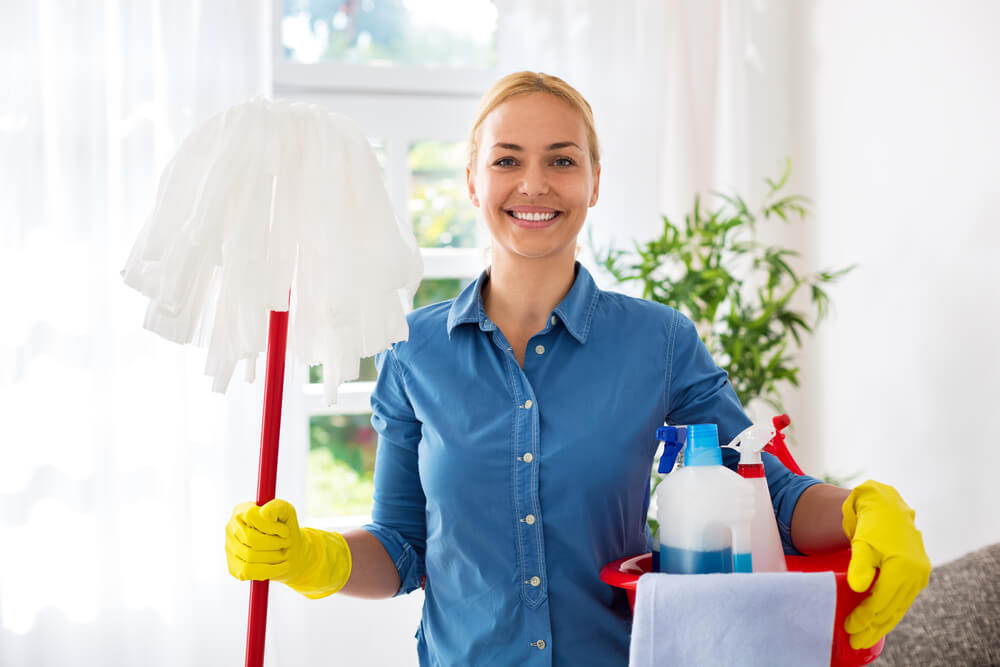Attain a Cleaner Home with These Everyday Cleaning Tips: Defrosted and Cleaned Every Few Months and More
Attain a Cleaner Home with These Everyday Cleaning Tips: Defrosted and Cleaned Every Few Months and More
Blog Article
Recognizing the Demand for Thoroughly Disinfecting and Disinfecting Regularly Touched Surfaces in High-Traffic Locations
In the realm of public health and wellness and security, the precise sanitation and sanitization of regularly touched surfaces in high-traffic areas stand as vital steps in protecting against the spread of dangerous microorganisms. By discovering the different elements of surface sanitation, from the risks associated with overlooking cleansing protocols to the effective methods that can be employed, a more clear understanding emerges of the vital function these practices play in guarding public wellness.
Importance of Surface Area Sanitation
Highlighting the detailed disinfection of high-traffic surface areas is critical in keeping a hygienic environment and protecting against the spread of hazardous virus. High-touch surfaces such as door handles, light buttons, elevator buttons, and kitchen counters act as breeding grounds for microorganisms and viruses. Routine disinfection of these surface areas is important to minimize the threat of contamination and transmission of ailments.
By executing a durable sanitation protocol, institutions and organizations can create a safer setting for workers, customers, and visitors. Correct surface area sanitation not just minimizes the spread of transmittable diseases however additionally infuses self-confidence in the tidiness and safety of the facilities. This aggressive method demonstrates a dedication to health and wellness and wellness, which is especially essential in high-traffic areas where the chance of direct exposure to microorganisms is enhanced.
Furthermore, surface area disinfection plays a crucial role in total infection control strategies. Incorporated with hand hygiene methods, putting on masks, and keeping physical distancing, comprehensive sanitation of high-touch surfaces develops an extensive defense versus the transmission of hazardous microbes. Focusing on surface sanitation is an essential component of an alternative method to wellness and safety in common areas.
Threats of Ignoring Cleansing Practices
Overlooking complete sanitation of high-traffic surface areas substantially heightens the danger of viral and microbial contamination, presenting a significant danger to the wellness and security of individuals frequenting these spaces. Failing to implement appropriate cleansing techniques can lead to the accumulation and spread of dangerous pathogens, consisting of viruses and microorganisms, on frequently touched surfaces such as doorknobs, handrails, lift switches, and counter tops.

Moreover, overlooking the significance of complete cleansing not just jeopardizes the wellness of people however also undermines efforts to maintain a sanitary and tidy atmosphere. It is vital to identify the relevance of correct disinfection procedures in stopping the spread of infections and guarding public wellness.
Reliable Sanitation Techniques
To keep optimum sanitation and lower the danger of contamination on high-traffic surfaces, utilizing effective disinfection approaches is vital. One of the most reliable and common sanitation methods is utilizing chemical disinfectants.
An additional efficient technique is using UV-C light. UV-C light has been revealed to be reliable in killing a vast array of microorganisms by interrupting their DNA framework, hence avoiding them from replicating. It is essential to use UV-C light appropriately, guaranteeing that the proper intensity and exposure time are used to accomplish the preferred sanitation results.
Furthermore, using vapor cleansing as a sanitation technique can be very reliable, especially on surface areas that are heat-resistant. Vapor can permeate porous surfaces and kill bacteria, infections, and other virus properly. When using heavy steam cleaning, it is crucial to guarantee that the surface area reaches the required temperature level for a sufficient amount of time to guarantee proper sanitation.
Effect On Public Health
The maintenance of high criteria of sanitation and disinfection on high-traffic surfaces plays an essential role in guarding public health and wellness. Regularly touched surfaces in locations with high footfall, such as doorknobs, handrails, elevator switches, and bathroom centers, work as breeding premises for unsafe pathogens. Stopping working to adequately sanitize these surfaces can bring about the rapid spread of contagious illness within click this communities. By carrying out extensive sanitation methods, the danger of transmission of viruses, microorganisms, and various other germs can be substantially lowered.
In high-traffic areas like airports, schools, hospitals, and public transport systems, the effect of strenuous sanitation actions can not be underrated. Prioritizing the sanitization of regularly touched surfaces is an aggressive technique to promoting public wellness and boosting the safety and security of people in common rooms.
Executing Normal Cleaning Methods
Quickly setting up and sticking to a constant routine of cleaning procedures is vital for keeping the tidiness and safety of high-traffic surface areas. Routine cleansing protocols are important in protecting against the buildup of bacteria and pathogens on often touched surface areas, especially in locations with high foot website traffic. By executing a systematic approach to cleaning, companies can successfully lower the threat of disease transmission and create a much healthier environment for staff members, customers, and the general public.
To develop a reliable cleansing schedule, it is essential to recognize high-traffic areas that need regular focus. These areas may consist of doorknobs, hand rails, lift buttons, restroom facilities, and common equipment. Applying a routine cleaning program that targets these surface areas multiple times a day can substantially reduce the spread of hazardous bacteria and viruses.
In addition, utilizing ideal cleaner and disinfectants is key to ensuring that surfaces are extensively sterilized. Regular training of cleansing staff on correct cleansing methods and the significance of adherence to the cleaning schedule is also important in preserving a sanitary setting. By focusing on constant cleansing protocols, companies can advertise the health and health of people that engage with these high-traffic surfaces.

Final Thought
In conclusion, it is crucial to focus on complete sanitation and sanitization you could check here of often touched surface areas in high-traffic areas to stop the spread of hazardous microorganisms and keep public health and wellness. Overlooking proper cleaning methods can enhance the danger of contamination and transmission of conditions. By carrying out regular cleansing methods and utilizing efficient disinfection approaches, we can create a much safer setting for everyone (defrosted and cleaned every few months). It is important to recognize the relevance of preserving clean surfaces in high-traffic areas to ensure the well-being of the community.
In the realm of public wellness and security, the precise disinfection additional hints and sanitization of regularly touched surface areas in high-traffic locations stand as critical steps in avoiding the spread of unsafe microorganisms. By checking out the various facets of surface sanitation, from the risks linked with neglecting cleaning methods to the efficient techniques that can be employed, a more clear understanding emerges of the vital duty these techniques play in protecting public wellness.Additionally, utilizing heavy steam cleaning as a sanitation technique can be very reliable, especially on surfaces that are heat-resistant. When making use of heavy steam cleaning, it is essential to ensure that the surface area gets to the called for temperature for an enough quantity of time to guarantee proper sanitation.
In conclusion, it is essential to prioritize extensive sanitation and sanitization of regularly touched surfaces in high-traffic locations to protect against the spread of dangerous pathogens and preserve public wellness.
Report this page